Get all the details about unlacquered brass faucets (also known as uncoated brass, a living finish or raw brass) in this complete guide. Learn all about unlacquered brass kitchen faucets, with a quick list of pros and cons.
We’ll also show you where to shop for these timeless faucets, how to maintain them, and what to expect as this material ages!
If you’re shopping for an unlacquered brass kitchen faucet, you’ll find that your options can feel limited and they are quite the investment. Get all my favorite tips and tricks to find that delightful patina you’re searching for!
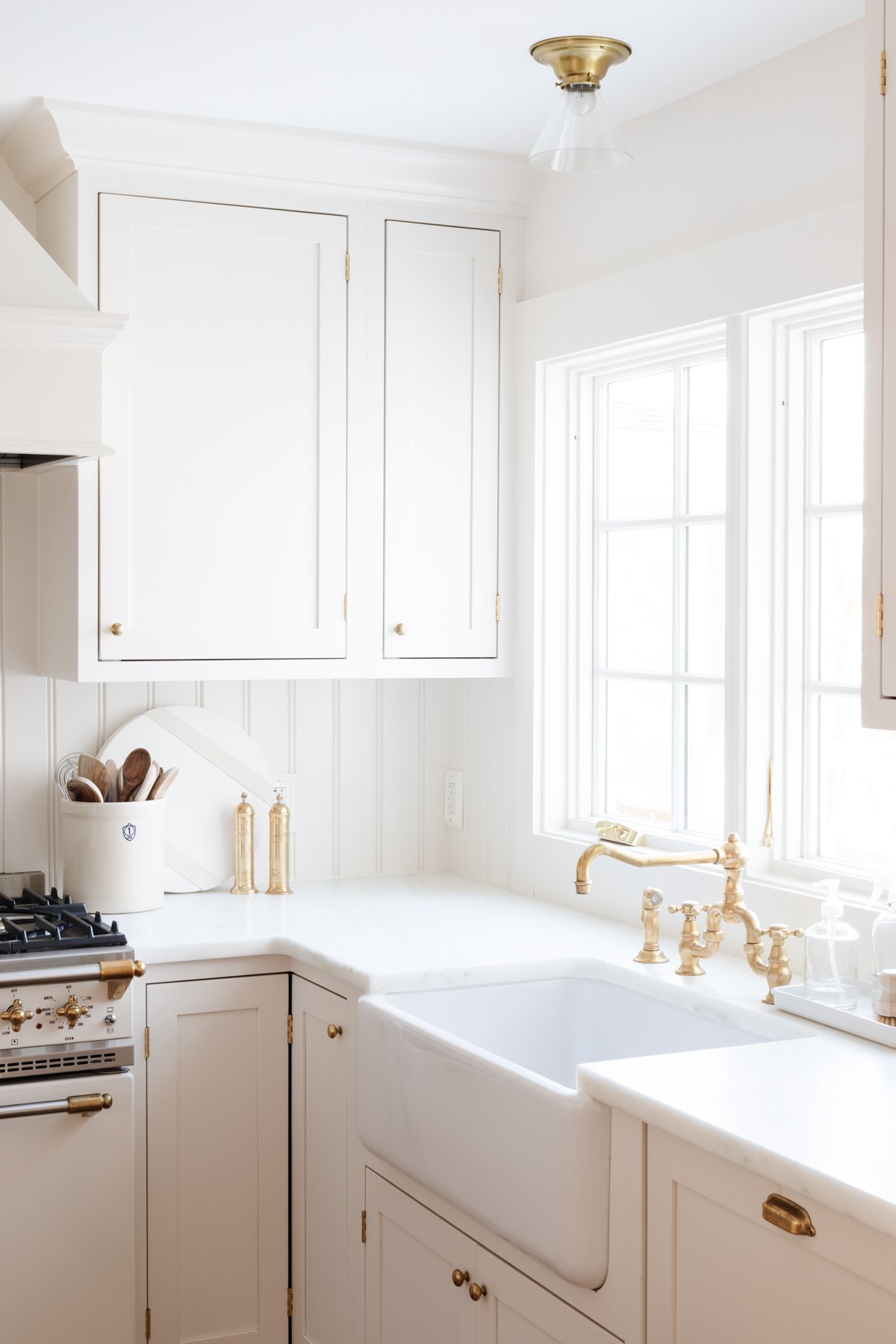
When we undertook our kitchen remodel several years back, I knew right away that unlacquered brass had my heart. There’s just something about that patina that I cannot get enough of… it adds an immediate warmth and elegance to any space.
Unlacquered Brass Faucets
After receiving so many questions about our new kitchen, I knew it was time to update you about our unlacquered brass faucet. It pairs beautifully with our Farmhouse Sink, doesn’t it?
In fact, we loved our sink in our St. Louis home so much that we just added an unlacquered brass Bridge Kitchen Faucet to our lake cottage, too! (Click through for the full before and after tours of both homes!)
Learn where to find them and how to care for them, too, in this complete guide!
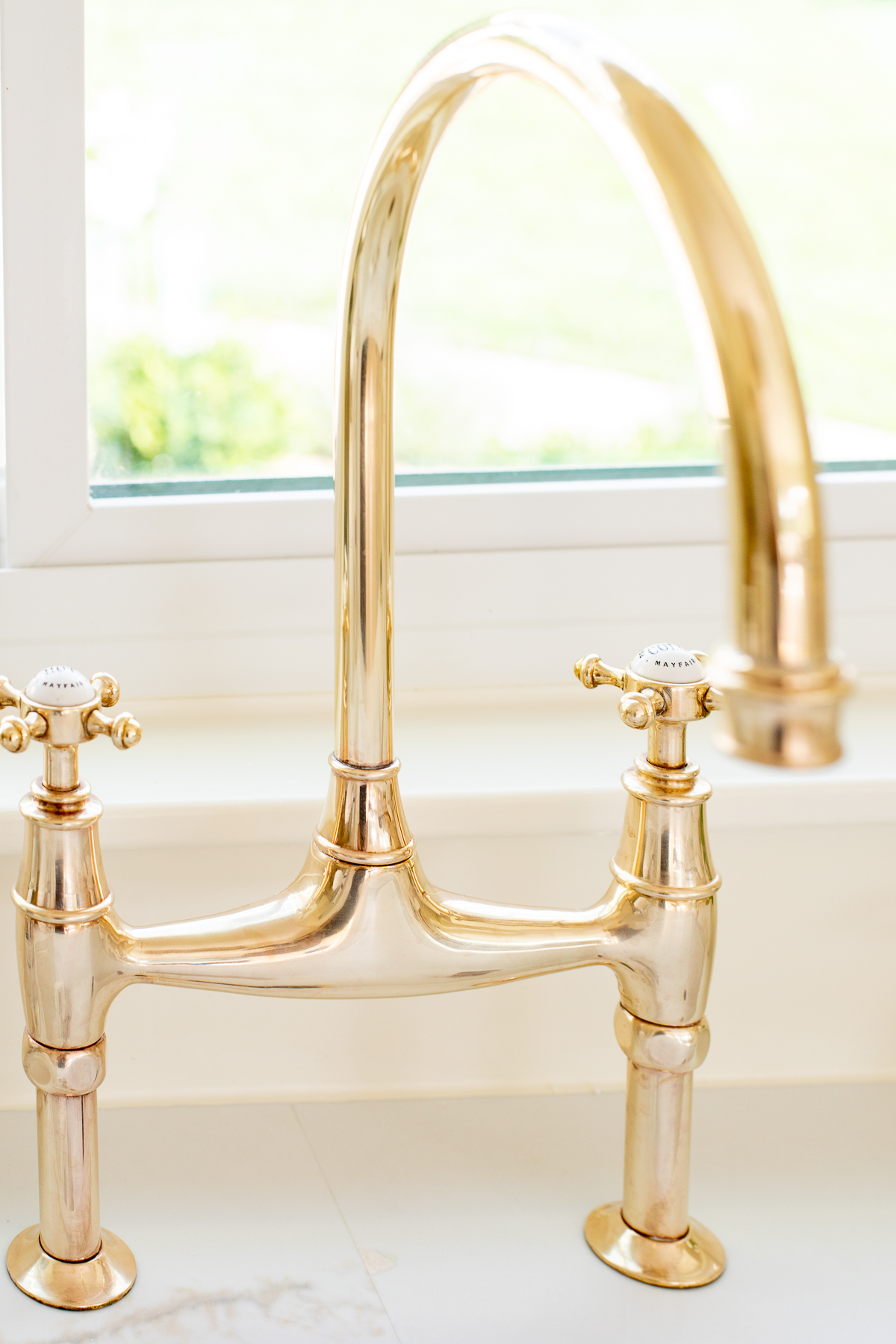
What is Unlacquered Brass?
Unlacquered brass is polished, raw brass without a protective coating. Thanks to oxidation, it darkens and develops patina as it ages.
It is often used for lighting, door knobs, cabinet hardware, faucets and more. Each piece is unique and will age unevenly from use, exposure to water, elements, etc.
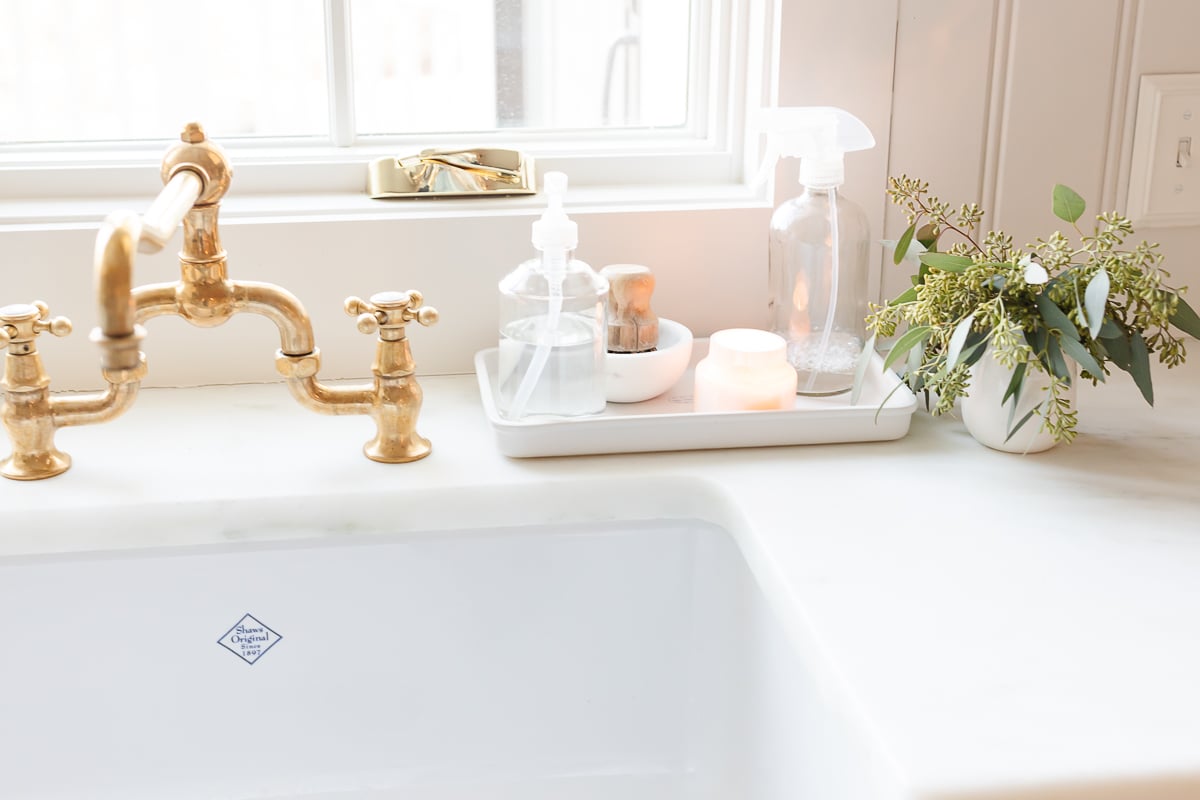
Pros
- Disinfects – This metal cleans itself! Scientific studies show that uncoated copper, brass or bronze can neutralize bacteria immediately, thanks to a chemical reaction. We love that this metal actually reduces germ build-up on contact.
- Maintenance – If you enjoy embracing imperfection (like our Danby marble countertops), you will love unlacquered brass because it requires very little maintenance.
- Easy to Polish – Luckily, if you prefer the shine of polished brass, you can simply polish your faucets to enjoy the original sheen.
- Charm – While a polished brass faucet has to be frequently wiped down because it shows spots, on an uncoated brass faucet, spots just blend in with the patina!
- Longevity – Unlike protected brass, it becomes darker and ages gracefully, adding warmth, character and timeless charm. It is a durable material that won’t rust and lasts a lifetime.

Cons
While we adore the patina on unlacquered brass as it ages, it’s not for everyone.
- Patina – For some, the oxidation and aging is a drawback. If you want polished brass all the time, I highly recommend you install polished brass, not unlacquered. However, you can return unlacquered brass with patina to its original condition by polishing it.
- Variations – Heavily used unlacquered brass pieces will become darker faster than those that receive minimal use.
- Traditional Style – It is often used in more traditional homes. However, it is frequently being installed in more modern designs as well!
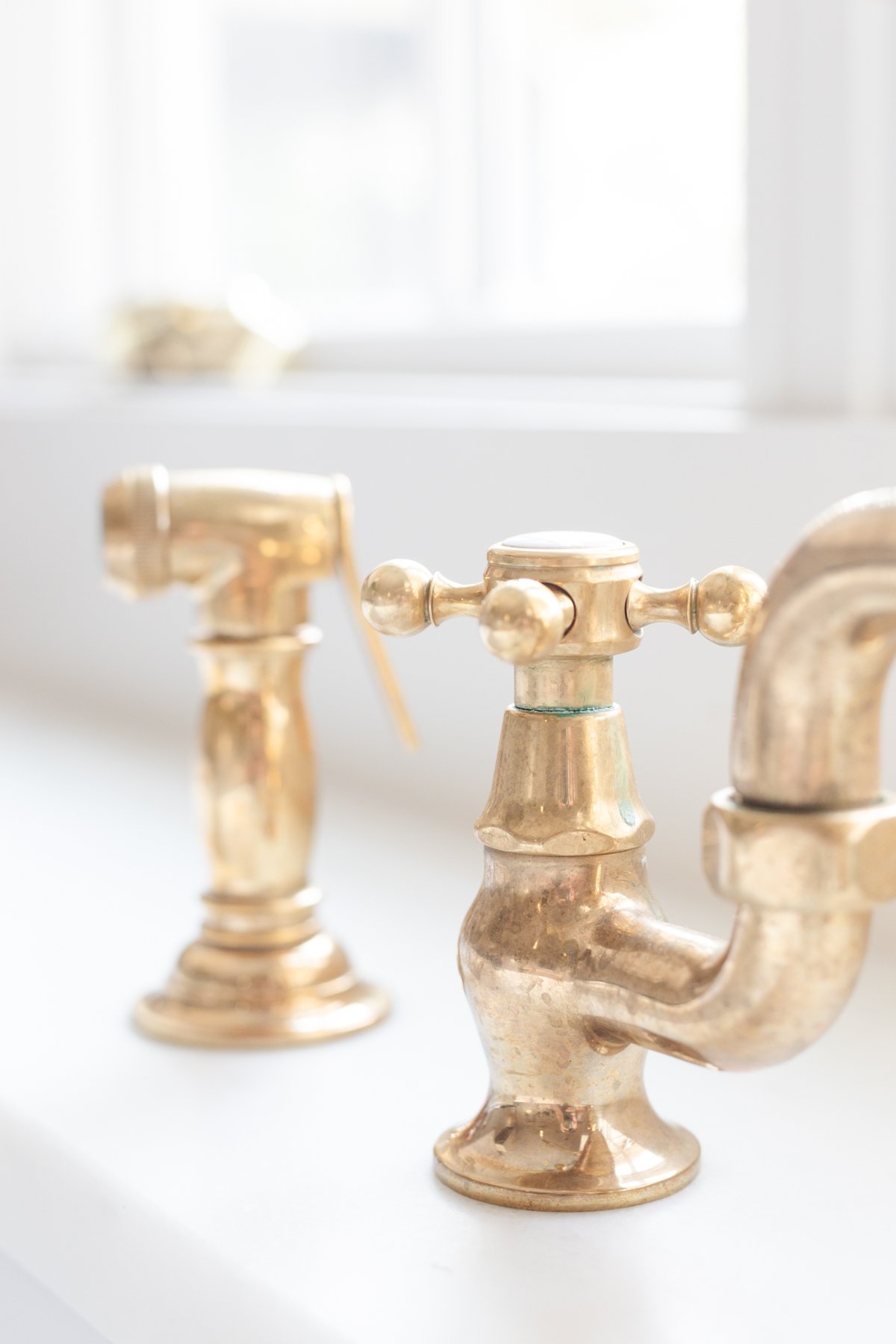
Frequently Asked Questions
As you can see in the photos in this post, it takes around a year to really start to see the patina. In fact, two years is probably when it was darkest.
Yes! Unlacquered brass ages to the perfect patina, which adds so much charm and warmth to your home.
Vinegar is safe on uncoated, raw brass. Find all the best methods for cleaning your brass with this Brass Polish.
Yes! You can give your uncoated brass a patina by using vinegar and salt or a brass ager.
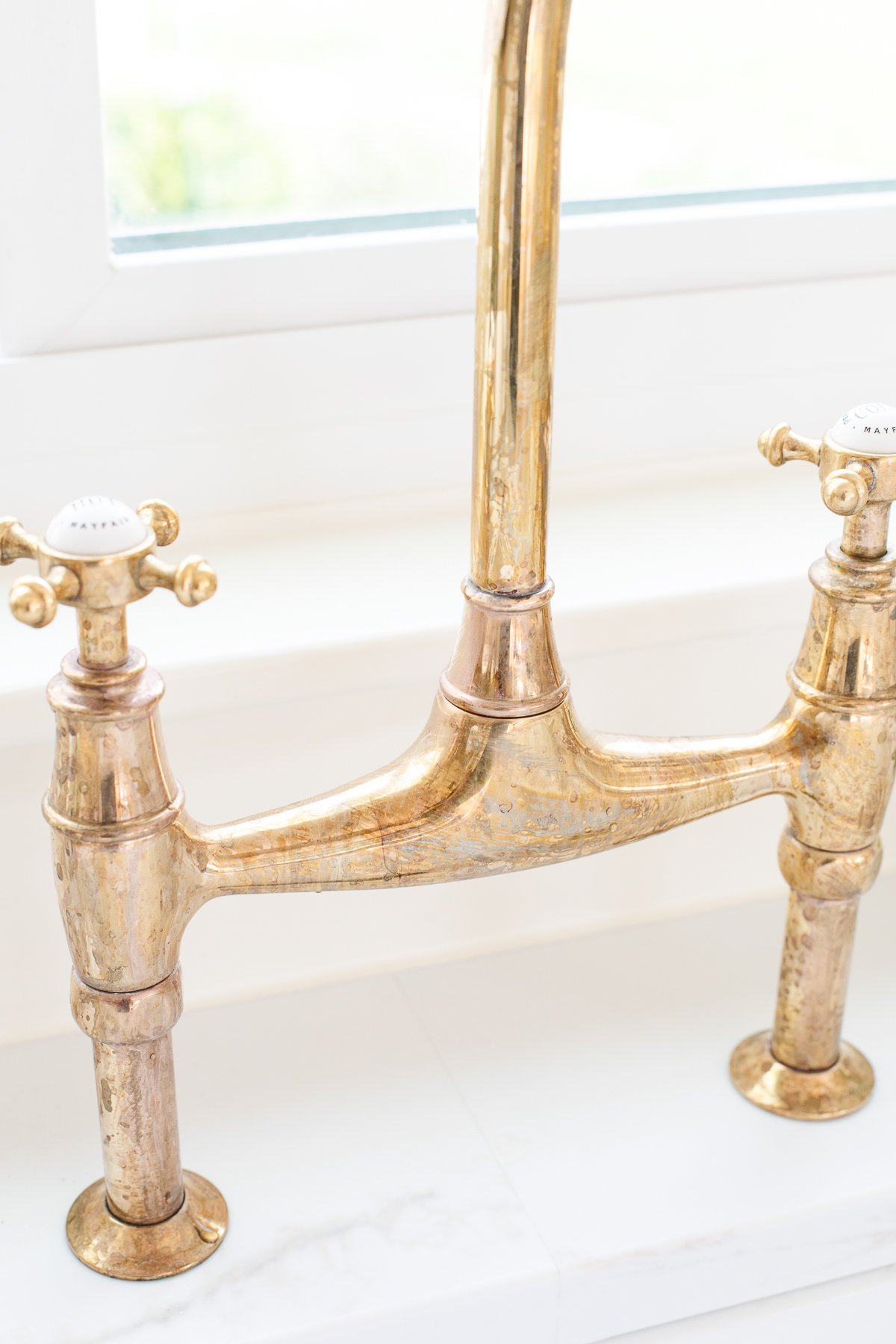

Care, Cleaning and Maintenance Tips
- More than anything, the side sprayer is a life saver! We contemplated doing without the side sprayer, but I’m so thankful we didn’t.
- Anything with acidity including tomatoes, citrus juice, toothpaste, etc will tarnish brass. A powdered brass polish or soft cleanser can renew the finish in just a few minutes.
- If you want to restore it and make it shine, learn about our favorite brass polish and techniques.
- For daily cleaning, use a soft cloth, soap and water or a surface spray. Dish soap effectively removes oils, food, fingerprints and more with a soft cloth, microfiber or a paper towel.
If you have more questions, be sure to read through the comments on this guide! There are so many great questions, answers and tips from real homeowners.
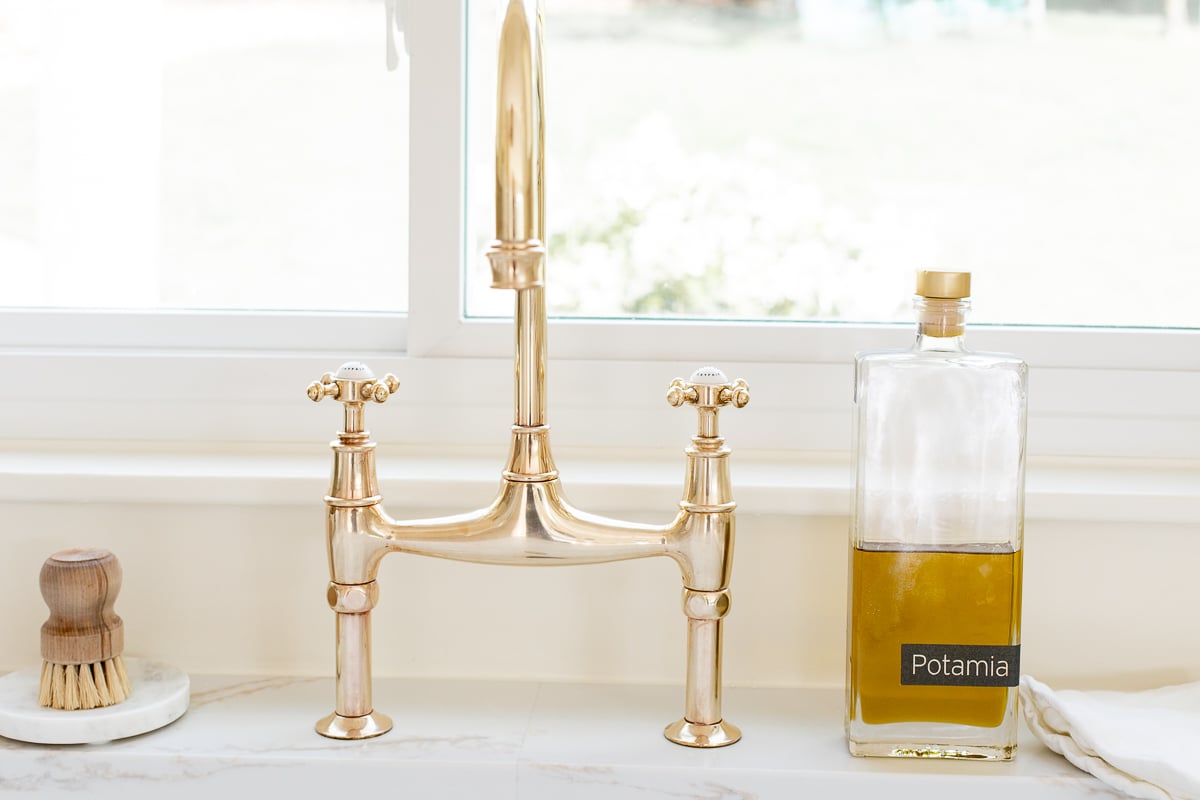
Sources
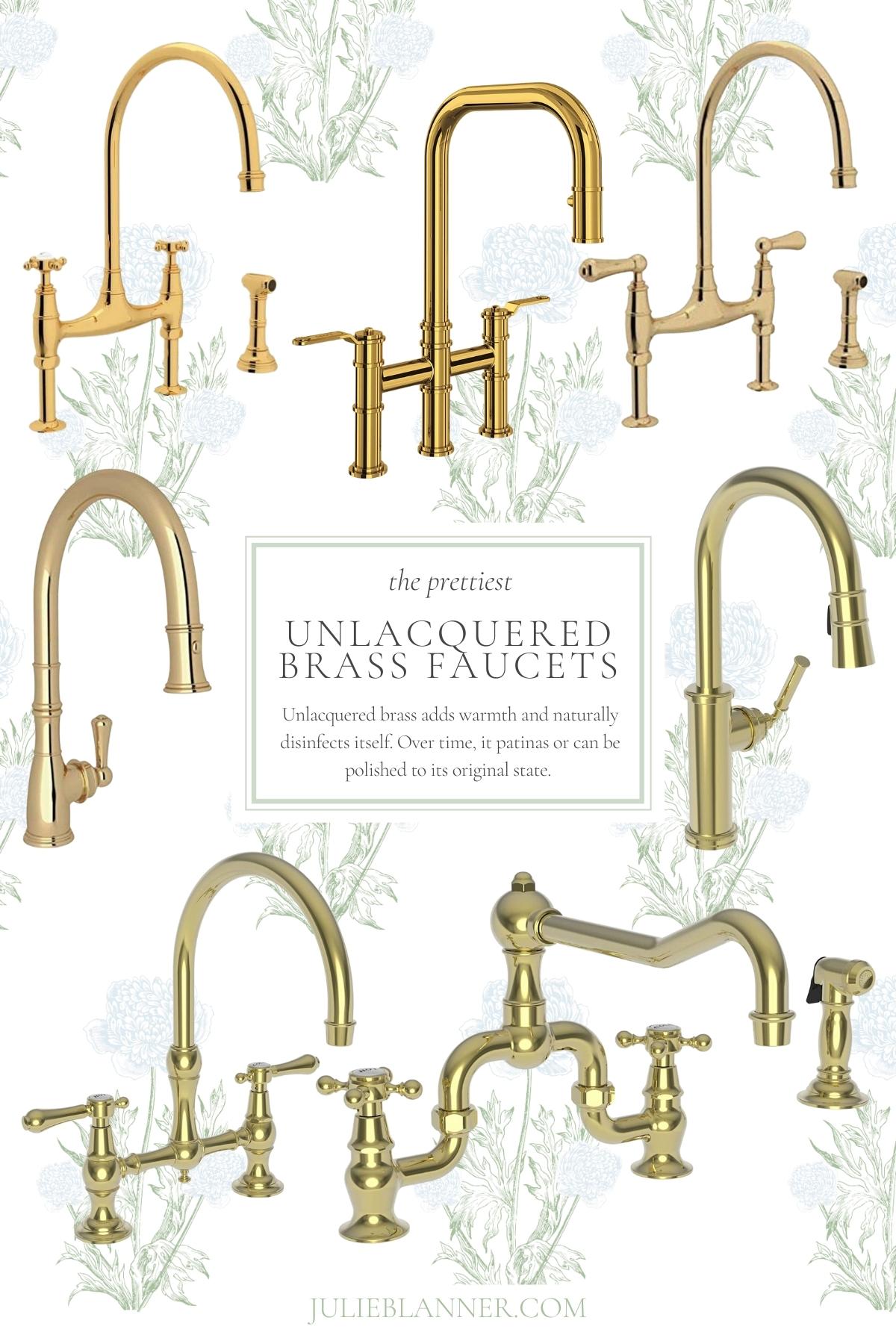
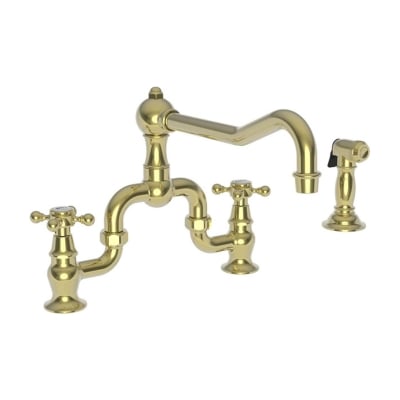
Newport Brass Bridge Kitchen Faucet with Side Spray
As seen in our St. Louis kitchen.
Georgian Era Bridge Faucet
As seen in our lake cottage kitchen.
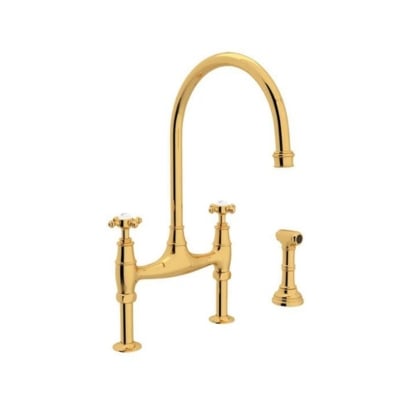
Click through on any of the following images to find more of our favorite unlacquered brass faucets!

Amazon Storefront
Follow my Amazon Storefront to find more holiday looks for less.
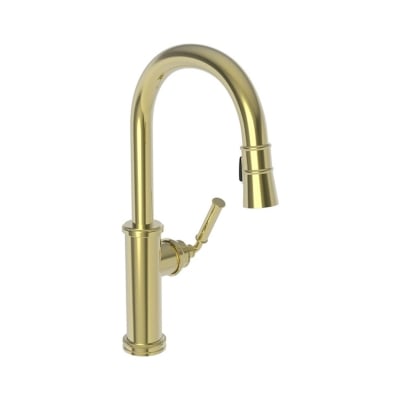

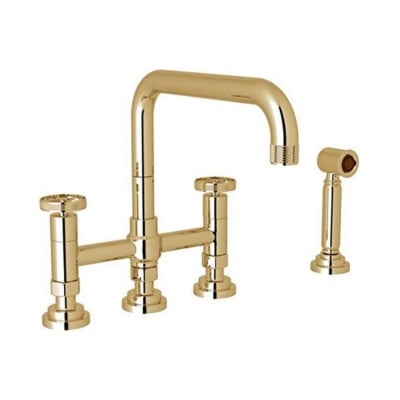
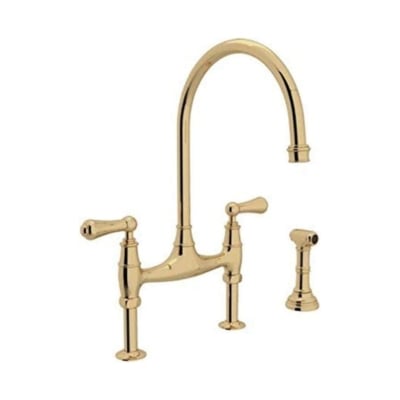

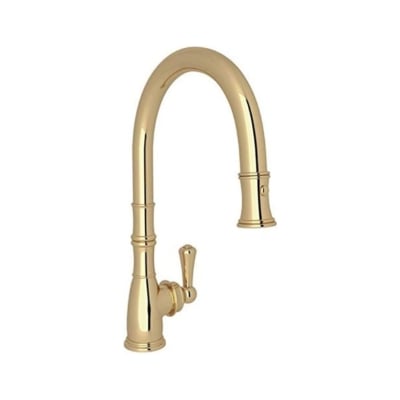
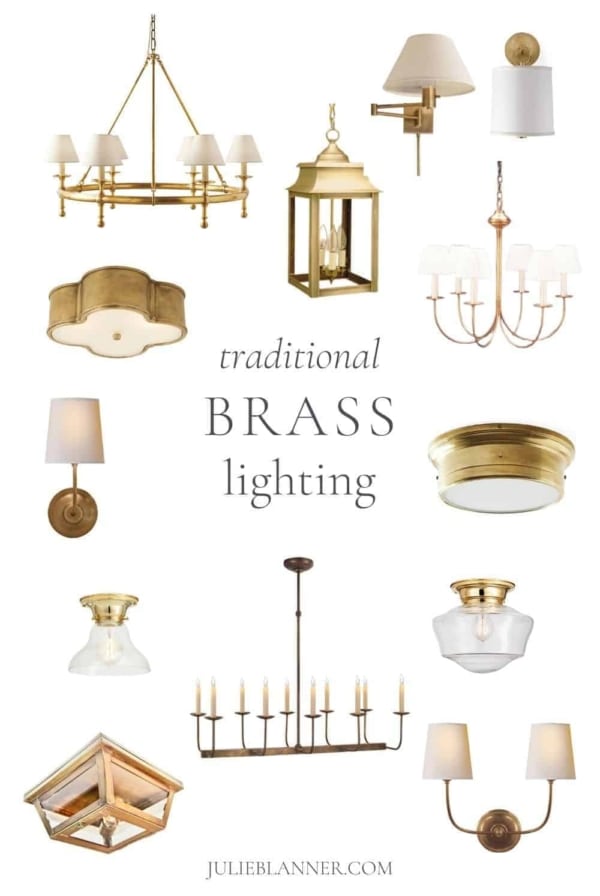
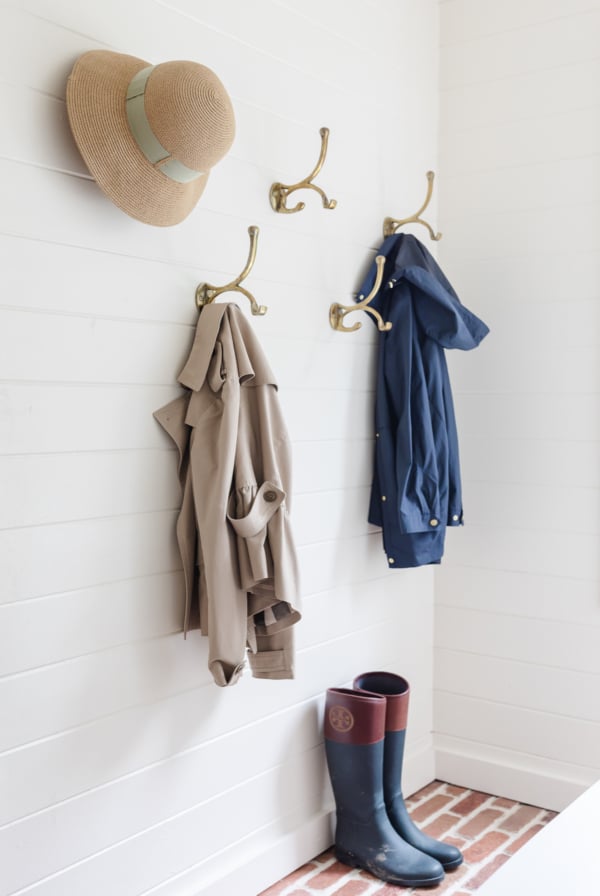
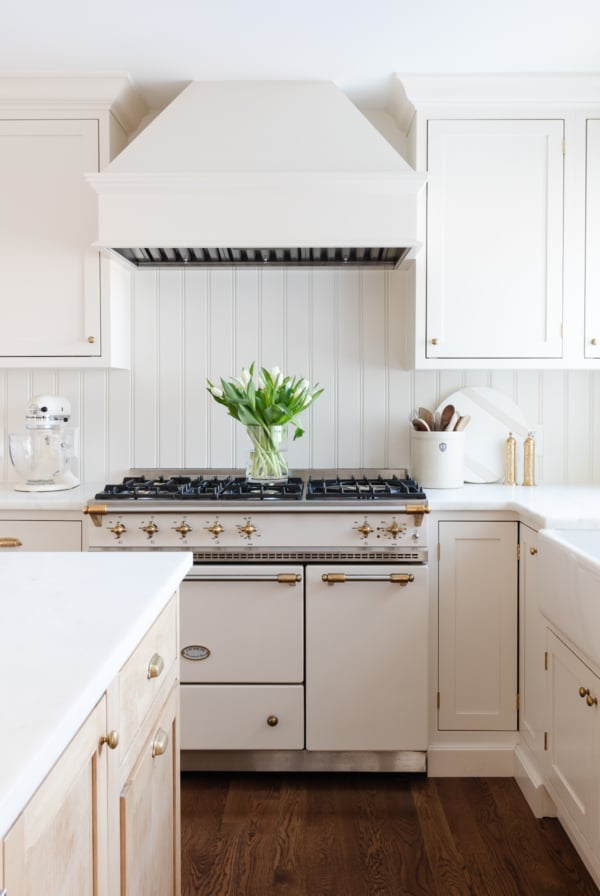
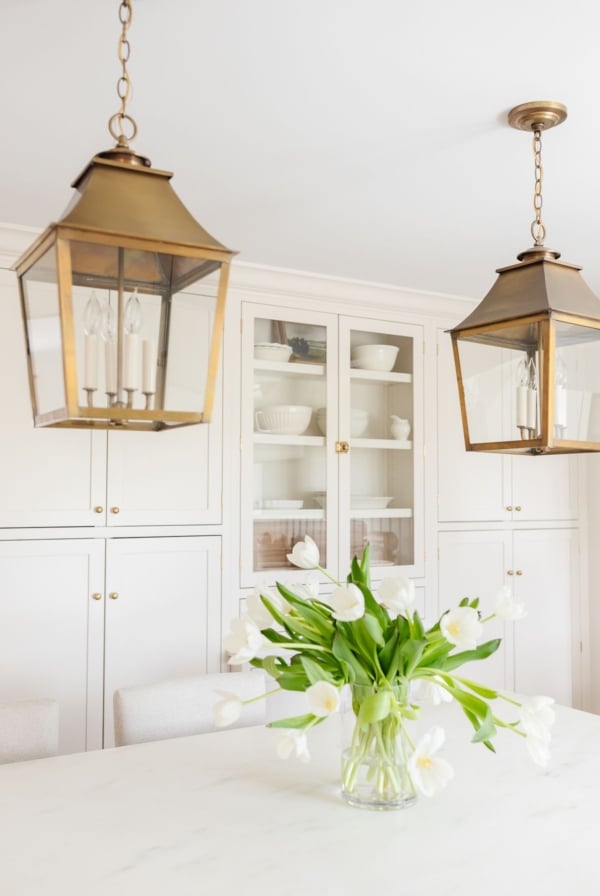
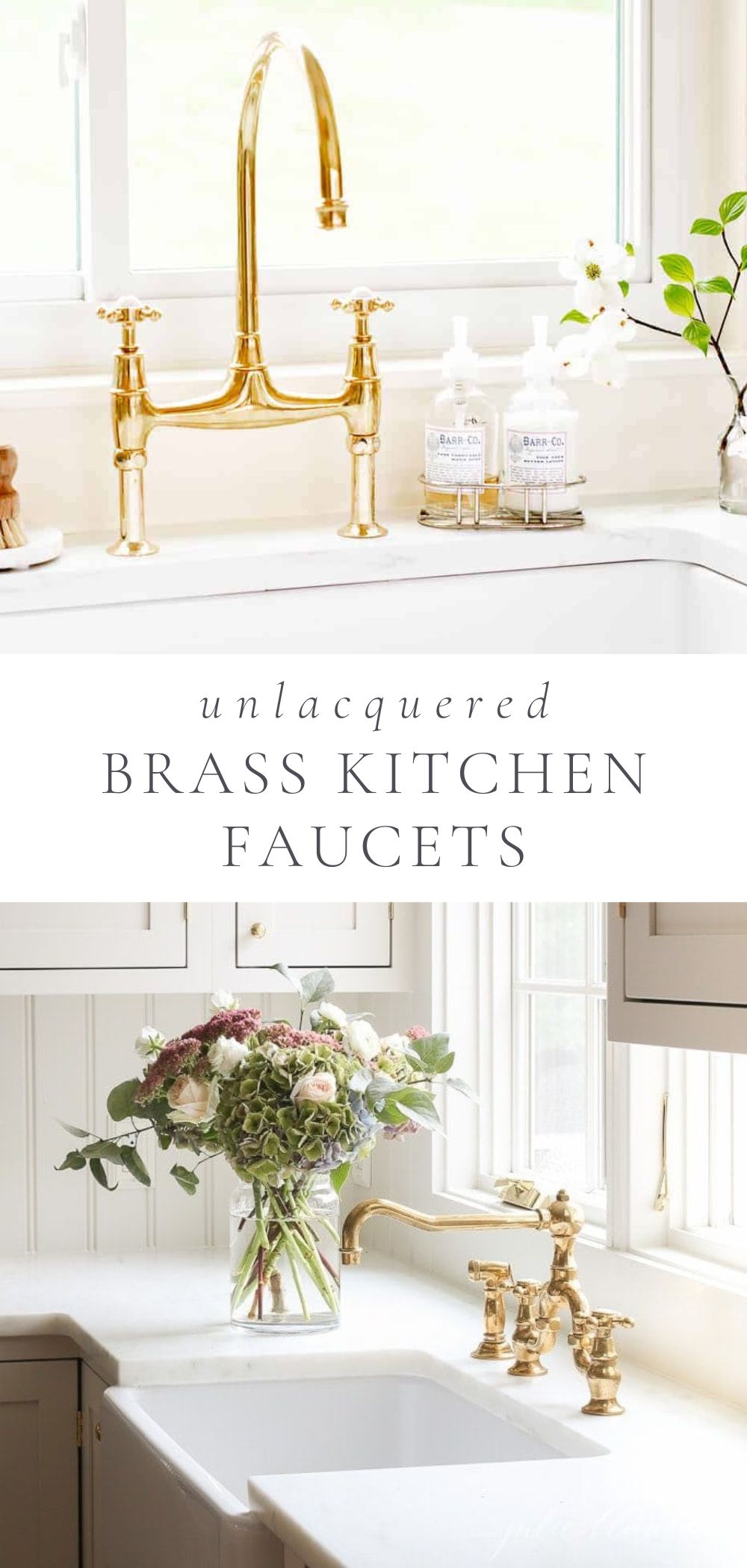
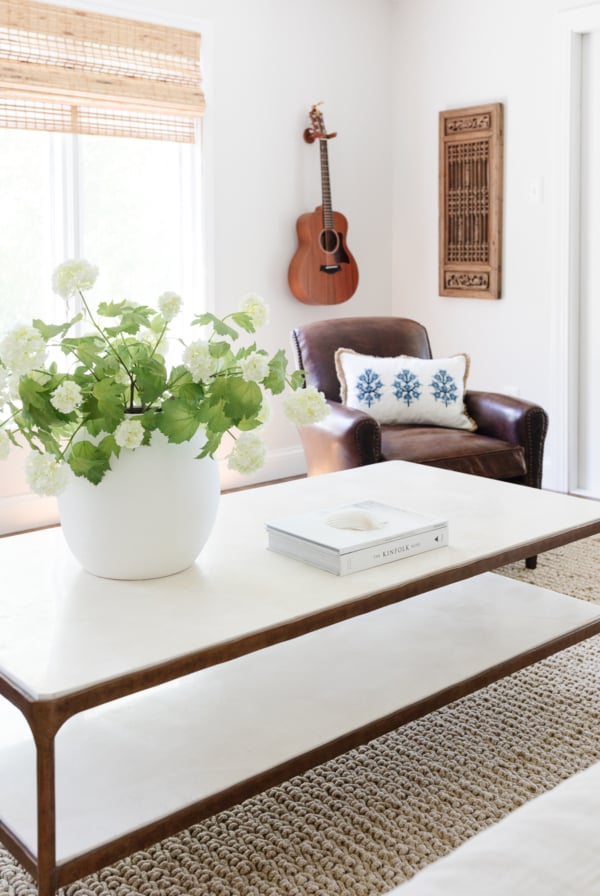
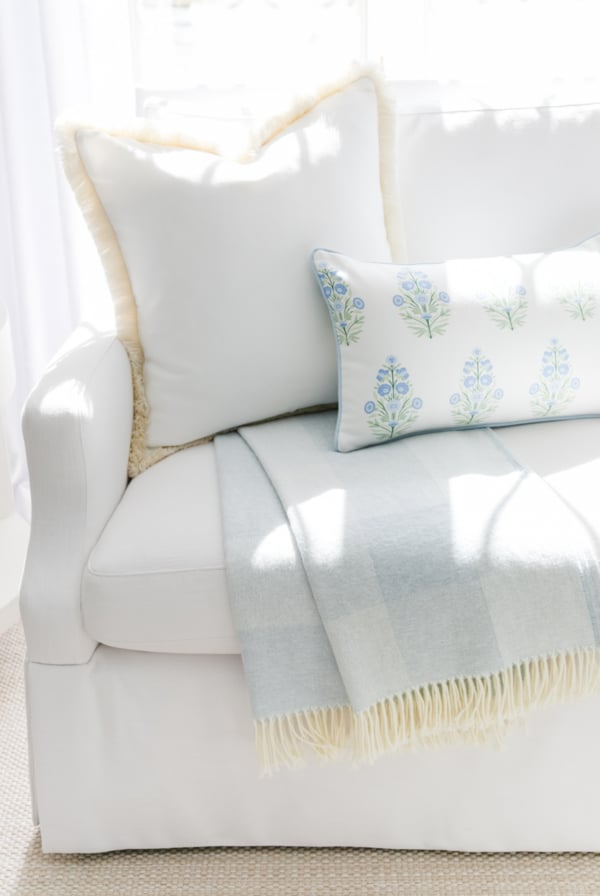
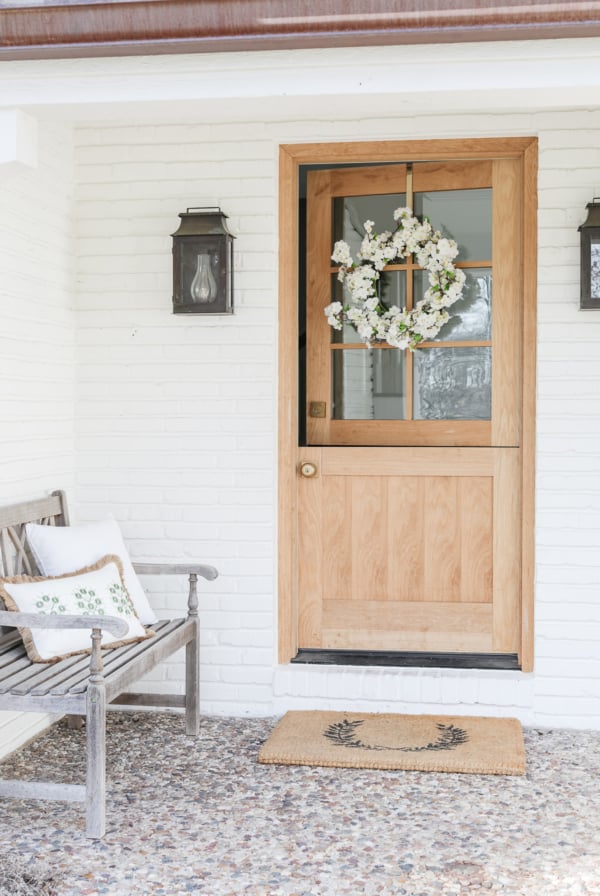






Will the polished brass kitchen faucet look the same as unlacquered polished brass. Looking at Waterstone and only seen in unlacquered and love it. But worry over time color will change due to cleaning or polishing. But also the polished brass will not have the same patina.
It will, but polished isn’t a living finish so it won’t age over time. I personally enjoy patina, but polished is so pretty, too!
Hello! I am considering a brass kitchen faucet. I have always had chrome, but the kitchen has brass accents … so I am looking into it. NBut … how difficult is it to keep clean? Does it tarnish?
Many thanks!
Julia
Raw brass does tarnish, you could do a solid polished brass that won’t. Raw is easily restored, but I like how it “weathers.” You can mix and match chrome and brass though, too! I love mixed metals.
Did you happen to source a matching drain for the faucet? Or did you go with chrome?
Great question! We did the matching unlacquered brass flange.
I do love that faucet, however, I just can’t get into a bridge faucet or handles that have to be turned for a kitchen sink. I often have totally contaminated hands and don’t want to be touching, thus contaminating, my handles. We have lots of unlaquered brass in our kitchen- cabinet hardware and LaCornue range- but I did chrome for my kitchen faucets. I cook full breakfasts and full dinners almost everyday and needed function over beauty for that. If it works for people, I think it’s great! I just know that it wouldn’t work for me. As for sprayers, they are a must for large farmhouse sinks. I couldn’t live without one! We didn’t put a sprayer in our prep sink and I regret that. Even though it is small, it’s hard to get all the peelings down the disposal with one. I’m definitely on Team Sprayer!
You’re hilarious! I don’t blame you at all. Have you seen the pedal? Grohe offers one, but it’s compatible with any faucet/any brand. We may add that in at a later date! I tried it at a showhouse I was photographing and LOVED it.
I like having a sprayer as it really speeds things up. We’re remodeling our house and for our kitchen I purchased the Perrin and Rowe traditional bridge faucet U-4764-ULB in unlaquered brass with similar neck style as yours, lever handles, and side spray. I’ve used brass for the past 31 years in my homes. It’s my favorite and it ages so beautifully.
So true, Deanna! That’s a beautiful faucet! Hope your remodel goes quickly and smoothly!